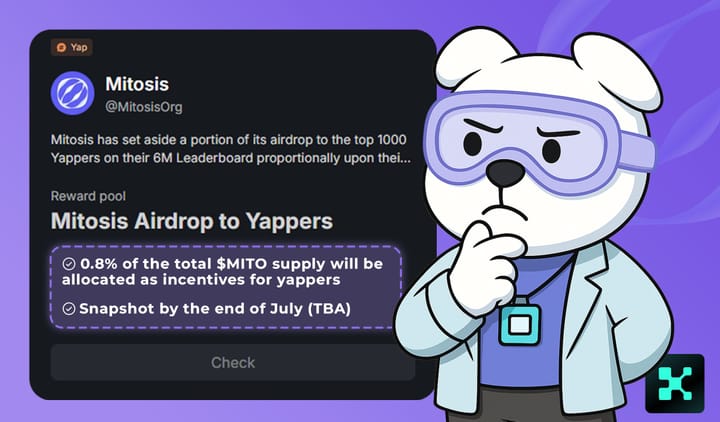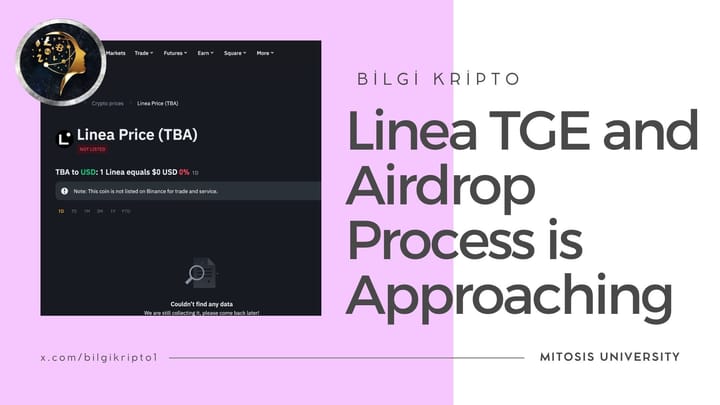Algorand Goes Native Multichain: Lessons for Mitosis
Introduction
On July 1, 2025, Algorand Foundation announced a major upgrade: support for Wormhole Native Token Transfers (NTT), allowing Algorand assets to move natively across 40+ chains without wrapping. This collaboration with Wormhole and Folks Finance positions Algorand as a true multichain-first ecosystem.
This article explores how the Native Token Transfer model works, why it matters for the future of liquidity, and how Mitosis can adopt similar mechanisms using its modular infrastructure especially via Matrix Vaults, miAssets, and cross-rollup interoperability.
What Are Native Token Transfers (NTT)?
Traditionally, sending tokens across chains meant wrapping: locking tokens on one chain and issuing a synthetic on another. But this comes with risks like:
- Smart contract exploits (bridge hacks)
- Fragmented liquidity across wrapped versions
- Limited composability
NTTs solve this by:
- Using Wormhole's cross-chain messaging layer to transfer native tokens directly
- Maintaining token identity across all supported chains
- Improving composability and trust in multichain DeFi
Folks Finance will be the first to launch a native asset (FOLKS) via NTT, making it tradable natively across Ethereum, Solana, Base, and more.
Mitosis Parallel: Modular Liquidity Without Wraps
Mitosis already operates at the frontier of composability and modularity:
- Matrix Vaults enable shared liquidity routing across appchains
- miAssets / maAssets represent interoperable collateralized tokens
- Hyperlane and zkLog integrations support secure multichain messaging
The NTT model reinforces Mitosis’ long-term goal: frictionless, native asset movement. Imagine a future where:
- miETH minted on one rollup becomes usable on another without bridges
- YieldKingZ rewards or Mikado raffles accept the same miAsset across chains
With zkLog-based proofs, this is technically achievable.
Comparative Analysis: Algorand vs Mitosis
| Feature | Algorand + Wormhole NTT | Mitosis Ecosystem |
|---|---|---|
| Tech Stack | Wormhole + AVM + NTT | Cosmos SDK + Hyperlane + zkLog |
| Multichain Movement | Native, no wrapping | Native via modular Matrix Vaults |
| Token Model | FOLKS native token via NTT | miAssets / maAssets |
| Community Involvement | Protocol-led | DAO-first (Morse DAO) |
| Liquidity Focus | Asset mobility | Programmable liquidity |
Strategic Takeaways for Mitosis
- Build NTT-style modules into Matrix Vaults
- Let users move miAssets across chains without issuing wrapped tokens.
- Use zkLog to verify cross-chain messages.
- Enable native cross-dApp token UX
- Stake miAssets in Mikado on Rollup A, earn yield in YieldKingZ on Rollup B.
- Create portable user states across the Mitosis app layer.
- Highlight liquidity composability in messaging
- Make Mitosis known not just for liquidity but composable native liquidity.
- Emphasize the difference between bridging and native cross-chain utility.
Conclusion
Algorand’s Wormhole-powered upgrade is a milestone for the multichain narrative but it’s not alone. Mitosis, with its appchain-native, zk-enabled, modular stack, is well-positioned to take NTT further by making programmable native liquidity the default.
As chains get more interconnected, projects like Mitosis that prioritize composability over control will define the future of DeFi.



Comments ()